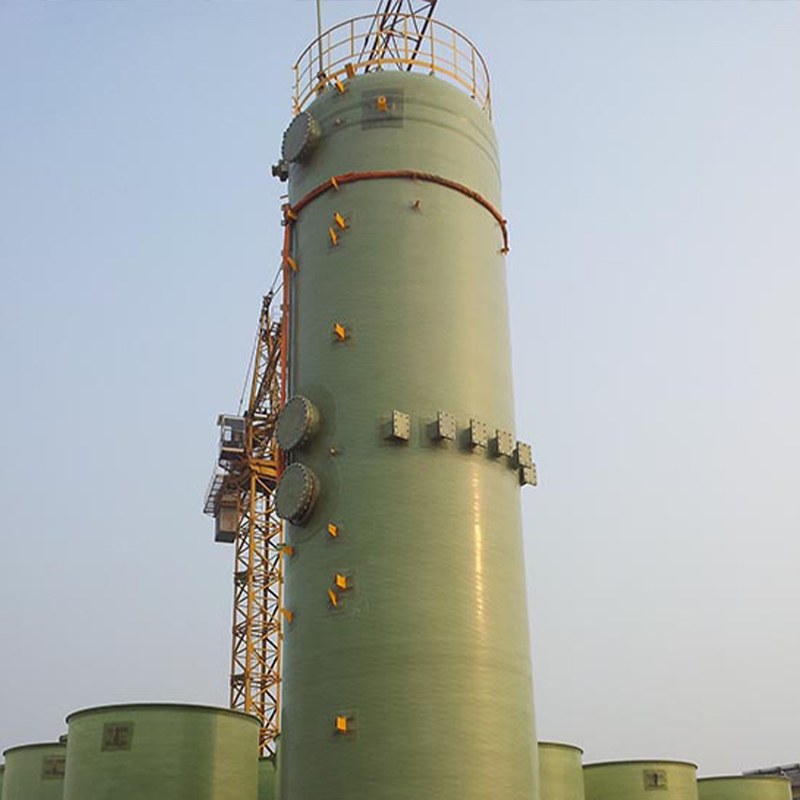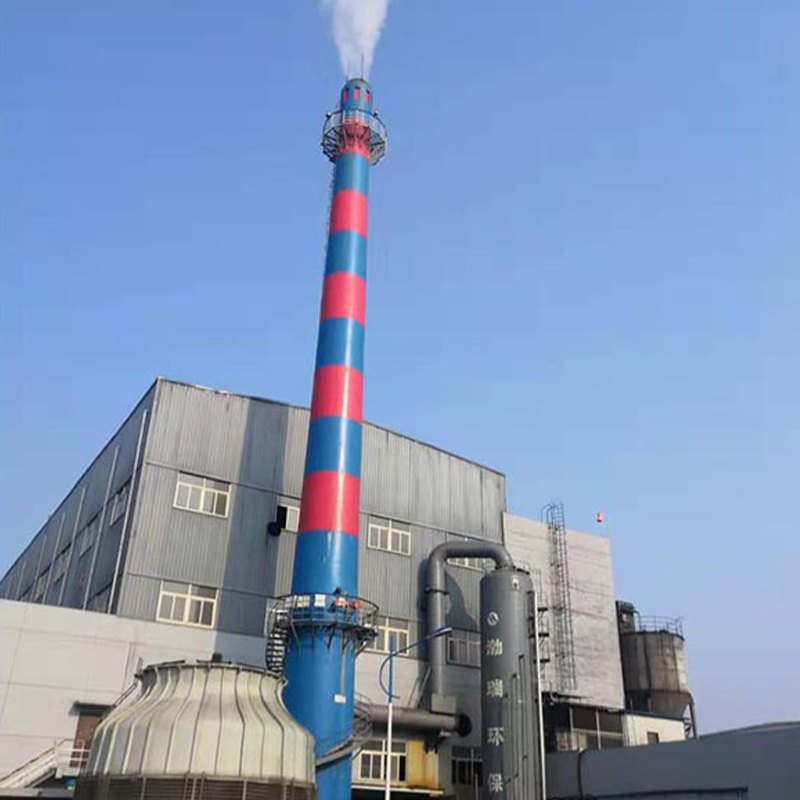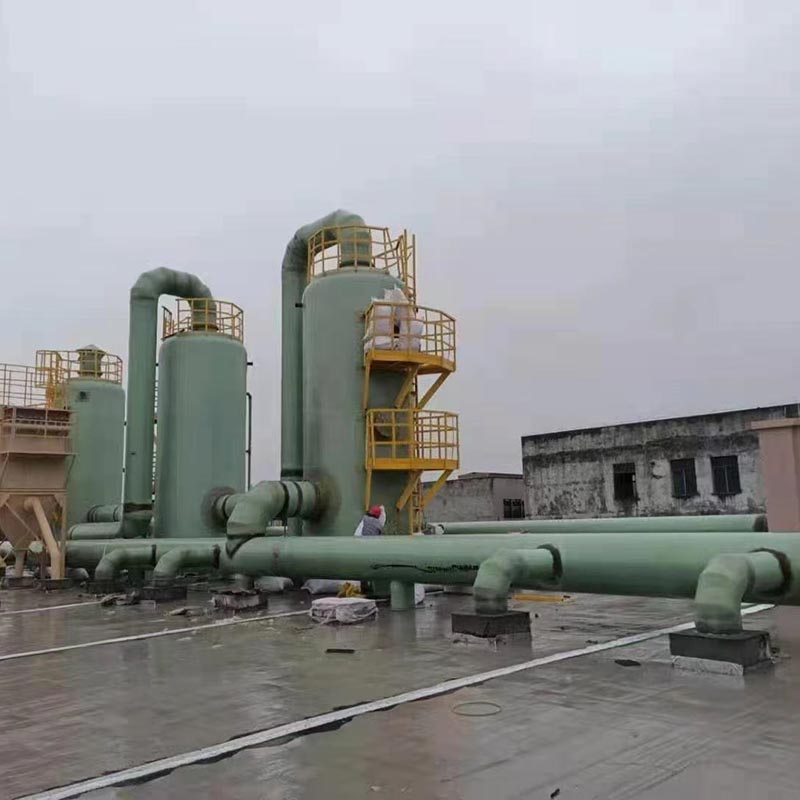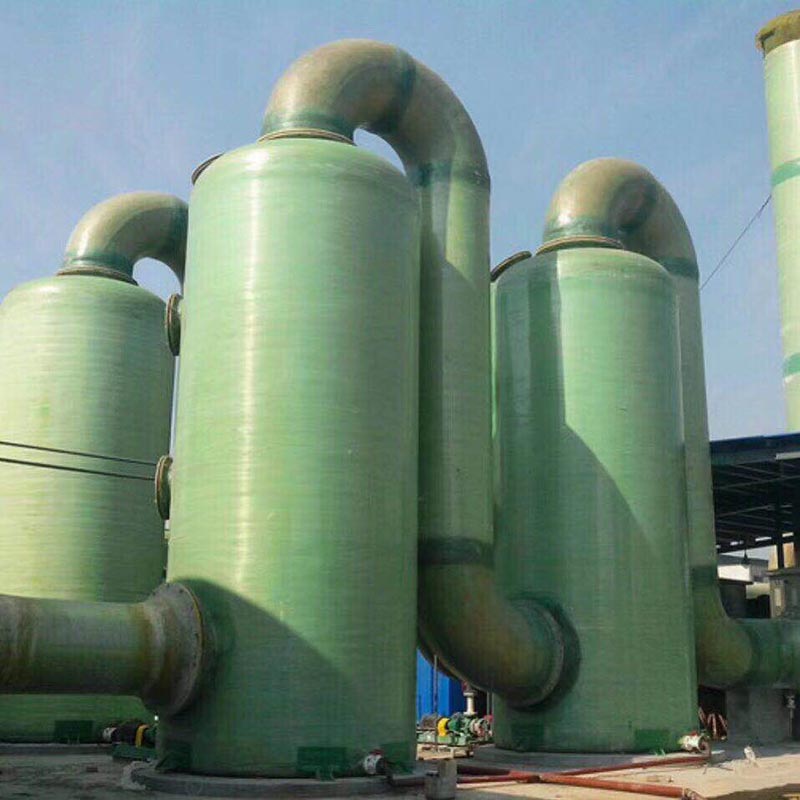Production Process:
1. Inner lining fabrication of Glass fiber reinforced plastic tower:
The glass fiber-reinforced plastic inner lining is divided into an inner lining layer and a transition layer according to the structure, mainly playing a role in anti-corrosion and anti-seepage.
(1) Preparation of lining resin. According to the resin formula system formulated by the quality inspection department based on the working environment and temperature conditions at that time, the lining resin is mixed as standard, and the number of ingredients should be reasonably controlled according to the manufacturing progress. When the on-site situation changes, the quality inspection department and manufacturing department should adjust the formula in a timely manner and prepare the required resin according to the new formula;
(2) Make the inner lining layer according to the laying steps required by the design. The production of inner lining adopts steel molds, and the imported Venus spray gun is sprayed into shape. The inner lining has a high resin content and excellent anti-corrosion and anti-seepage effect. The resin content of the inner lining layer is above 92%, and the resin content of the transition layer is 80%.
(3) Process inspection. After laying each layer according to the design requirements, the operator is required to conduct a preliminary quality inspection: whether the inner lining reaches the design thickness, whether there is poor resin or hanging resin in local areas, and whether there are white spots or bubbles. If any of the above situations occur, they should be reported in a timely manner and measures should be taken to deal with them;
(4) Deep curing and demolding of the inner lining.
2. The upper and lower heads are formed and strengthened.
The head is divided into an inner lining layer and a structural layer according to the structure of the tomb.
(1) The forming process and raw materials of the inner lining layer of the fiberglass head are the same as those of the inner lining layer of the fiberglass cylinder. It is formed using a spray gun and has a high resin content. The inner lining layer of the head has been laid and deeply solidified.
(2) Lay the structural layer of the sealing head, and alternately spray the spray gun to spray the yarn and glass cloth. During the laying process of each single layer of glass cloth, reasonable tension should be applied, and an appropriate amount of overlap should be applied between each other. Combined rollers should be used to repeatedly roll and drive out bubbles to ensure that the fibers are completely soaked. Require each reinforcing material layer to meet the designed resin content requirements.
(3) Process inspection, curing, and demolding.
3. Assembly of fiberglass tower:
(1) Demould the cured inner liner and head of the cylinder, and cut them into the dimensions specified in the design documents.
(2) Connect the inner lining of the cylinder with the head using an assembly ring, and adjust the assembly ring to the nominal diameter Φ- 30mm, insert the assembly ring into the inner lining of the cylinder, and tighten the assembly ring to the diameter of the work scale Φ- 15mm, place the lower head on the exposed part of the assembly ring, slowly expand and tighten the assembly ring, and measure the circumference of the inner lining and the diameter at 3 points (uniformly distributed) to meet the standard requirements.
(3) Lay the outer reinforcement layer of the butt joint, polish the joint area, and lay the outer joint in a stepped manner (increasing width) from the inside to the outside, with the outermost width not less than 500mm. After the overall reinforcement is completed, the inner seam is bonded with inner lining resin and chopped strand mat, and laid in a stepped (increasing width) manner from the outside to the inside.
(4) Process inspection.
4. Overall reinforcement of fiberglass tower:
(1) Connect the assembled equipment shell to a CNC fiber winding machine, and polish and trim the external surface of the equipment shell. Drill holes at the inner lining pipe opening and inflate to ensure the roundness of the lining.
(2) Use a chopped strand mat to locally strengthen the stress concentration area at the corners of the bottom cover and cylinder, adjust the winding angle and head wrapping angle, and adapt to the stress concentration characteristics of the head. The width of the bottom cover wrapping is greater than 250mm, and the height of the cylinder wrapping is 400mm.
(3) Process inspection, and curing.
5. Glass fiber reinforced plastic tower nozzle assembly:
Mark and locate according to the drawings, and install the nozzle through holes.
6. External protective layer of glass fiber reinforced plastic tower:
after the overall production is completed (including the installation of accessories), spray the protective layer, and add an ultraviolet absorber and toughener to the anti-aging gel coat resin.
7. Final inspection.






